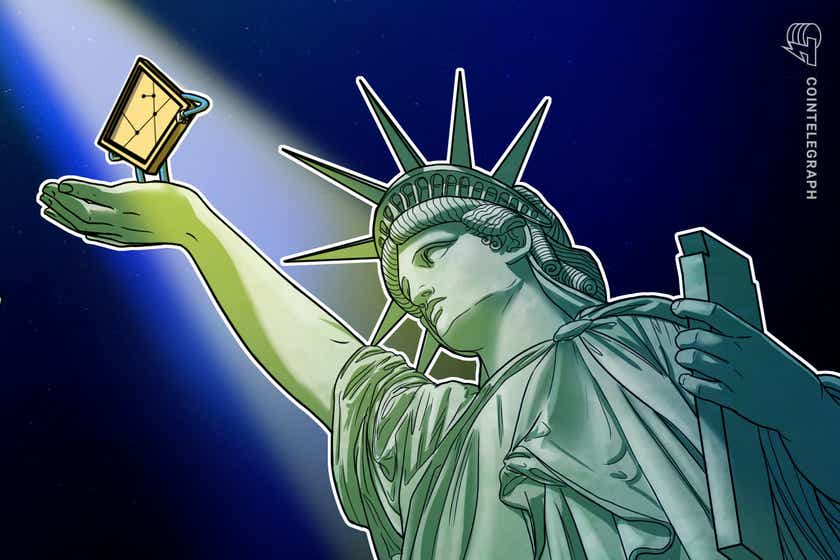‘We saw mainstream adoption for NFT art kicking off in 2021,’ says NFT.NYC co-founder Cameron Bale

The nonfungible token cyberspace, however, is in need of significant media broadcasts and promotion from notable consumer brands to take off.
For the past three years, NYC.NFT has been the leading annual gathering in the nonfungible token and digital blockchain art world. This year, over 5,500 attendees and 135 sponsors joined debates, talks, workshops and briefings in the namesake event. In an exclusive ask-me-anything session, Cameron Bale, co-founder of NYC.NFT, joined Cointelegraph Markets Pro users to discuss the outlook on the NFT industry. Here’s what Bale had to say.
Cointelegraph Markets Pro User: You had some amazing speakers in NFT.NYC 2021. Can you tell us a bit aboutwhat insights were shared by some of those heavily influential folks?
Cameron Bale: Some people don’t realize it, but 2021 was our 3rd year hosting the event. Hardly anyone knows!! We had 500 attendees in the first year (I think beyond those people, most believe NFTs have only been around a year or so!) Personally, since our first year, I think we knew that many industries, beyond gaming and art, would be disrupted by NFTs. The coolest thing was seeing real-world applications of NFTs within some of those industries.
CT Markets Pro User: Justin Herzig presented a “formula” to value NFTs. Is there such a thing? How can NFT.NYC help projects build a community?
CB: I think that is an excellent idea so long as people don’t treat it as gospel. Certain signals can suggest or help predict the increasing value of a project, such as news stories, the buzz on social, growing community on Discord. People relying on this information and investing money they can’t afford to lose high risk — indicators like Justin presented need to come with a disclaimer, as I’m sure he does!
CT Markets Pro User: Other than art, what are the most critical use cases for NFT?
CB: There are some pretty cool use cases out there. Anyone who joined the space early might recognize these cycles of NFTs penetrating different industries. Art and collectibles came first. In my opinion, this was because they are digestible and relatively easy to understand use cases. Following that, blockchain gaming, and then onto more focused industries, ticketing, entertainment, genetics, all sorts of cool stuff. Finally, in 2021 we saw mainstream adoption for art kicking off. Thank you, Beeple, Metakovan, and Christie’s, for bringing it to the mainstream!
Now we are seeing events that shine a light on those other industries. Gaming and metaverses are starting, etc. The question above about Zuckerberg and Meta is interesting. Anyone who holds land in the Sandbox or other metaverse projects probably noticed a spike in interest in their assets following Facebook’s announcements.
The NFT community is curious and optimistic about how NFTs can disrupt these different industries. Still, without adoption by mainstream media and brands who can reach millions/billions and show them HOW, we won’t see the impact we want.
Related: The NFT world is gradually bridging the gap between niche and mainstream
CT Markets Pro User: What are the top NFT projects you will watch for 2022?
CB: Three things guide my personal interests. (1) Does it have a meaningful utility that adds value to my life, or someone else’s — I am excited about virtual land now that the world is waking up to metaverses! (2) Is there a community — this could be literal in the sense of Discord groups or online communities, or it could be aspirational, like getting an NFT from a brand you admire and becoming part of “the tribe” (3) Do I love the art?
CT Markets Pro User: How will NFT be used with consumer goods? Serialized products?
CB: That’s a really broad one! Digital twins/NFT registration of high-value or luxury goods is a cool use case. We ran a trial at NFT.NYC, where we gave away 1,000 caps — each contained an NFC tag which could be scanned by tapping your phone on it.
The first time it was tapped delivered you an NFT that essentially registered the product. Subsequent taps after that then showed whoever scanned the tag who owned the product (via the NFT). I think that’s an excellent example because you can verify the authenticity of the physical product by confirming that the official brand minted the attached NFT. Another one for consumer products is coupons. Of course, digital coupons have been around forever, but using NFTs as the store of value of coupons makes them tradable and composable.
Related: Daft Punk meets CryptoPunks as Novo faces up to NFTs
CT Markets Pro User: Will NFT.NYC 2022 tickets be minted as NFTs?
CB: This was a common question at NFT.NYC 2021. We have experimented with NFT ticketing every year of the event. There are some great crypto-centric products out there (we had a great experience with Mintbase in 2020). However, in my experience, I’ve yet to find a platform that caters to the business needs of a large-scale event (think communications with attendees and badge printing, etc., or to mainstream audiences). We are focused on bringing mainstream media and newbies into the space.)



